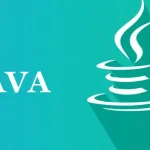Java, known for its versatility and robustness, offers powerful features for parallel programming, allowing developers to harness the full potential of modern multi-core processors, a concept thoroughly covered in Java Training in Chennai. In this blog post, we’ll explore some of the top tools for Java parallel programming, empowering developers to write efficient and scalable concurrent applications.
1. Java Concurrency Utilities
Java Concurrency Utilities, part of the Java Development Kit (JDK), provides a comprehensive framework for concurrent programming. It includes classes and interfaces for thread management, synchronization, and concurrent data structures making it a fundamental tool for parallel programming in Java.
2. Fork/Join Framework
The Fork/Join Framework, introduced in Java 7, simplifies parallel programming by allowing developers to divide tasks into smaller subtasks that can be executed concurrently. It utilizes a work-stealing algorithm, where idle threads steal tasks from other threads’ work queues, maximizing CPU utilization and minimizing idle time.
3. Parallel Streams
Parallel Streams, introduced in Java 8 as part of the Stream API, enable parallel processing of data streams with minimal effort. By simply invoking the parallel() method on a Stream, developers can leverage multi-core processors to execute stream operations concurrently, enhancing performance for tasks like filtering, mapping, and reducing large datasets.
4. CompletableFuture
CompletableFuture, introduced in Java 8, represents a future result of an asynchronous computation. It allows developers to compose complex asynchronous workflows easily. This concept is typically covered in a comprehensive Java Online Course at FITA Academy. It supports chaining asynchronous tasks, combining multiple CompletableFutures, and handling exceptional conditions, making it a powerful tool for parallel programming and asynchronous execution.
5. Akka
Akka is a toolkit for building highly concurrent, distributed, and resilient applications in Java (and Scala). It implements the Actor Model, where actors communicate via message passing, enabling scalable and fault-tolerant systems. Akka provides abstractions for managing concurrency, supervision, and clustering, making it well-suited for building reactive and resilient applications.
6. Parallel Colt
Parallel Colt is a high-performance library for scientific computing in Java, offering parallel implementations of fundamental mathematical algorithms. It provides classes for linear algebra, statistics, and random number generation, optimized for multi-core processors. Parallel Colt is widely used in scientific and computational applications for its efficiency and scalability.
7. JCTools
JCTools (Java Concurrency Tools) collects high-performance concurrency tools and data structures designed for Java developers. It includes lock-free queues, queues optimized for multi-producer, multi-consumer scenarios, and other concurrent data structures. JCTools is known for its low-latency and high-throughput performance, making it suitable for demanding concurrent applications.
Parallel programming in Java offers developers the ability to exploit the computational power of modern multi-core processors, a topic extensively covered in Java Institutes in Bangalore. This understanding enables developers to enhance performance and scalability for a wide range of applications. By leveraging tools and libraries, developers can write efficient and scalable concurrent applications with confidence.
Also Check: Java Developer Salary For Freshers






Recent Comments